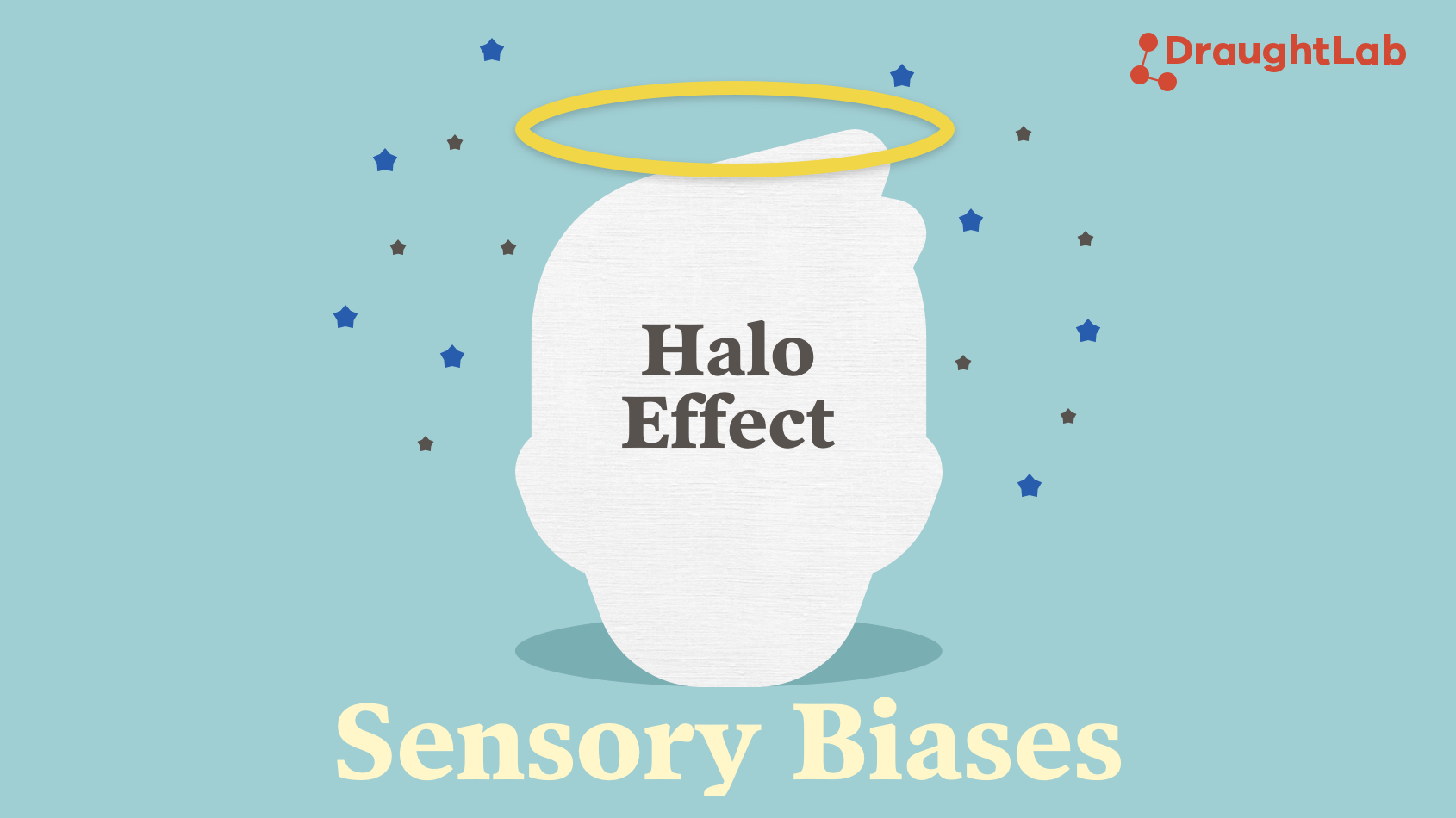
The halo effect is a kind of bias where a person’s status or perceived skill in one area causes us to illogically assume that they’re skilled at everything else. When you like or admire someone, the “halo” over that person’s head may compel you to agree with them when you normally wouldn’t.
What is an example of the halo effect?
Suppose you’re running your usual sensory panel. Today, the confident, charismatic coworker shows up and asks to join the proceedings (this is our “halo”). They sit down, grab a sample, and say “Wow, this is right on target! What do you think?” One by one, your fellow panelists magically agree: this is a perfect example, bar none.
This scenario clearly puts the panel in a bind. Sure, they are well respected at the company, but does that mean their evaluation should singularly drive the outcome of the tasting? It’s a dangerous logical leap, yet the halo effect pressures people to head over that cliff. The effect can reverberate through your panels and, subsequently, your long-term data.
How could the halo effect influence my sensory panelists and data?
- Panelists might be inclined to second-guess their initial reactions out of admiration, respect or even fear of the “halo”. Critical thinking about the product gets replaced with social considerations, which is death for data.
- As the halo effect compels tasters to alter their initial evaluations, they could get funneled into alignment with the halo. This threatens to turn your panel into a homogenous, unilateral “yea or nay” from the halo.
- Sensory panels may become uncomfortable. They may even start to feel unnecessary if one person’s opinion is going to steer the ship every time. Effective sensory panels require multiple tasters rendering educated, objective opinions.
So how do we go about avoiding it? Here are a few tips to help keep the bias at bay:
Tip 1: Acknowledge bias risk
Awareness helps. Remind panelists that we may view some individuals’ opinions more highly based on perceived status, and that we should resist that temptation.
Tip 2: Encourage full participation
Though roundtable discussions are only appropriate in a few scenarios, when moderating roundtables, it’s important to guide the discussion so every participant’s point of view is heard. This may seem simple, but it takes a lot of practice to get right. In a roundtable, try directly asking each participant for their input.
Tip 3: Complete DraughtLab evaluations independently
Whether you’re running a roundtable or independent tasting, it’s important that each panelist gets the opportunity to submit their objective feedback before a discussion takes place. DraughtLab software inherently mitigates the halo effect since each taster can quickly do evaluations privately – halos included.
Tip 4: Save the chatter for later
It’s human nature to want to comment on what you’re sensing right away – or even make “yummy” or “yucky” sounds – but to avoid biasing other panelists, have tasters withhold commentary during tasting.
Tip 5: Separate tasters if possible
If you can facilitate separate tastings or a “self-service” scenario where tasters evaluate in a separate space, even better.
If the halo effect is disrupting your panels or you’re having trouble with other biases, we can help you devise strategies to combat it. Sign up for one of our office hours slots and let’s talk about it. It’s free!
DraughtLab offers practical and approachable Sensory Analysis Solutions that deliver real-world value to food and beverage companies. Visit our website or reach out to us at info@draughtlab.com to learn more!